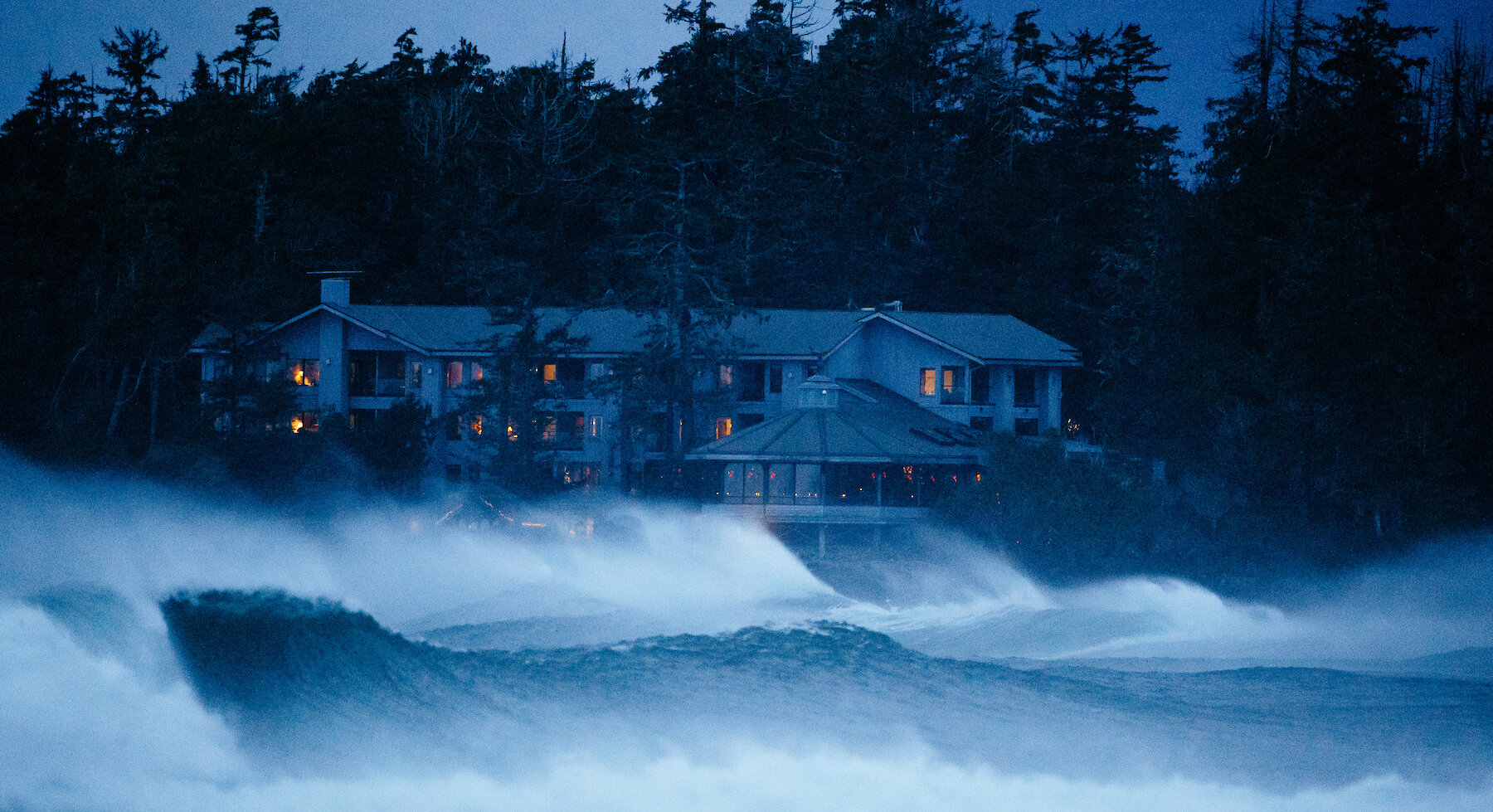T+L | This Little-known Season Is Actually the Best Time to Visit the Pacific Northwest
Article Information & Social Sharing
Original article by Kristen E. Pope for Travel + Leisure
Five inches of rain was due to fall over the Washington coast in the next 48 hours, and I was headed straight into the storm. On my slow-going, three-hour drive from the Seattle airport to Copalis Beach one January night, what started as a light mist turned to heavy rain, and I had to dodge tree debris scattered in the road.
Around 9 p.m., I finally reached Iron Springs Resort. After settling into my cabin, I walked outside on the deck overlooking Boone Creek and the Pacific Ocean beyond. I felt the stinging rain on my face and could hear the crashing waves, but I couldn’t make out the landscape — it was not until morning, when I raised the window shades, that I saw the mammoth waves crashing in the distance and white-tipped pulses of water racing up the creek, propelled by the high tide. I was in no hurry to rush out the door, sitting for hours at the window, watching the infinite rolling of the water.
I’m not alone in my interest in this powerful phenomenon — each year between November and February, when Pacific storms are at their most violent, stormwatching season draws people to the coast to marvel at these tempests. (In November 2020, a video went viral of monster waves pouring over the Westport, Washington, seawall, drenching onlookers.) In Oregon and Washington, lodges built high on oceanside bluffs allow visitors to observe from a safe vantage point, and many of these properties — like Headlands Coastal Lodge & Spa in Pacific City, Oregon — even have “stormwatching packages.”
Further north, the Wickaninnish Inn in Tofino, British Columbia, was built specifically with stormwatching in mind. As a child, Charles McDiarmid used to observe the waves on Chesterman Beach from his family’s nearby cabin. The experience inspired McDiarmid and his brother to create a stormwatching haven at the inn when they opened it in 1996.

“You’d see 25 to 30-foot waves crashing on the rocks right in front of the cabin, and we all felt very secure in our little nest there amidst the storm,” McDiarmid says. He recalls the distinctive sound of huge driftwood logs smashing into bedrock, making a low-level vibration he likens to the sound of a tuning fork. “It’s a front row seat at the movie theater of Mother Nature, like an extra wide screen in high definition.”
Pacific storms are so intense because of several factors, explains Bridget Trosin, a coastal policy specialist with Washington Sea Grant at the University of Washington. She says Pacific storms are barreling off the Pacific with “no land breaks to help break the waves or the storm until it rolls right into the coast.”
When a powerful Pacific storm occurs during a king tide — the highest tides of the year, generally occuring in the winter months — they can be especially damaging. Like all tides, king tides are based on the positions of the moon, sun, and Earth. In the Pacific Northwest, king tides generally occur during the winter months when they have the potential to coincide with powerful Pacific storms. Just before I traveled to Washington, record high tides caused flooding and damage in a number of locations in the state.
There are a few basic, but crucial, rules to safe stormwatching: stay farther back from the water than you think you need to; be aware of “sneaker” or “rogue” waves that come without warning; don’t stand on storm walls or breakwalls since waves can go right over them; obey signage and guard rails; and never, ever turn your back on the ocean.
Subscribe to the Inn's monthly newsletter here and be the first to know about our latest news and exclusive offers.


